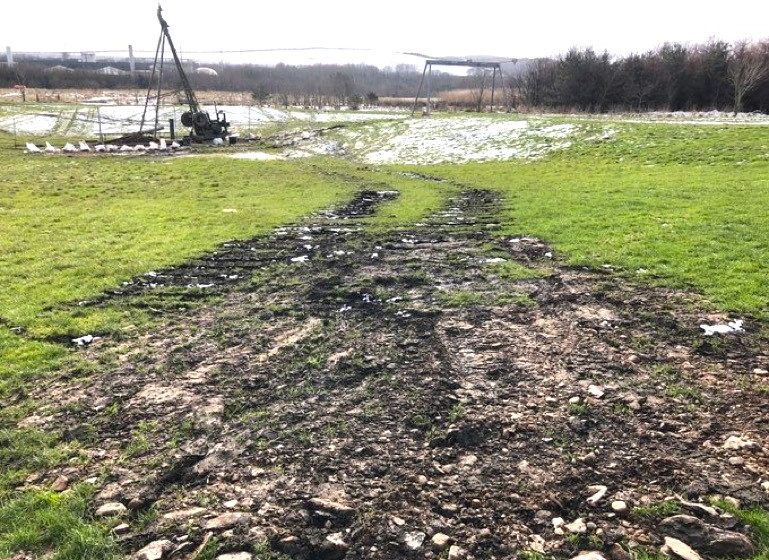This week, full civil legal aid was granted in a judicial review for a client in Torry, Aberdeen, challenging the decision by Aberdeen City Council (ACC) to industrialise St. Fittick’s Park as part of its Energy Transition Zone (ETZ) plan for the city. The sist in the case is now being recalled and the question of permission to proceed will be considered by a Lord Ordinary in the Court of Session.
On 30 January 2024, ACC granted a formal undertaking not to develop or lease St. Fittick’s Park pending determination of the petition for judicial review. Worryingly, ground inspection works are currently underway at the park.
GLC believes such operations fall within the definition of development of land as defined by section 26 of the Town and Country Planning (Scotland) Act 1997 (which includes engineering operations or mining or other operations).
It appears that around 20 bore holes and sample pits have been excavated from St. Fittick’s Park. GLC’s Edinburgh agents are seeking an urgent response from ACC’s Edinburgh agents on the apparent failure to adhere to the formal undertaking not to develop the park pending resolution of the petition for judicial review.
St. Fittick’s Park is the last remaining accessible green space for a community of around 10,000 people in Torry, Aberdeen where few residents have private gardens. Torry is surrounded by two industrial harbours, an industrial estate, a railway line, a sewage works, landfill sites, a regional waste centre, an incinerator and one of the most polluted roads in Scotland.
Local campaigners believe the loss of the park will have an adverse impact on the health, wellbeing and amenity of local people. In December 2021, 22 medical doctors from across Aberdeen published an open letter expressing their concern over the loss of the Park for local people. The doctors drew a comparison between the Aberdeen area of West End North, where the residents of two streets have exclusive access to 15 acres of mature riverside woodland, and the residents of the Torry community and said:
“There is a 13-year difference in life expectancy between these two areas …The difference in healthy life expectancy is around twenty years. There is an eight-fold increase in the risk for someone in Torry being admitted to hospital with complications of chronic lung disease … Torry has a higher proportion of young people and children living in it … there is a significantly higher proportion of dependent children per household than in the rest of the city, and more often in single parent households. Child poverty is accordingly high. Access to private transport is less common in the area and access to distant green space is thus much more difficult.”
“[Torry] also has the highest level of unemployment in the city. Median household income is more than four times greater in West End North … Rates of dental decay in Torry run at over 80% by the end of primary school. These schools have some of the lowest levels of attendance in the city. Teenage pregnancies are still more than twice the average for the city and around eight times more than for West End North. Prescriptions for antidepressant medication are more than twice those for West End North. Drug-related hospital stays are almost three-times the Scottish average, and drug overdoses are more frequent here than anywhere else in the city. There are also disproportionately high levels of domestic abuse and household fires.”
GLC’s Solicitor Advocate Mike Dailly is instructed with Charis Brooks, Solicitor acting for our client and Laura McDonagh, Partner at Drummond Miller LLP acting as Edinburgh agents. Thanks to Hannah Moneagle, Solicitor and environmental justice campaigner for her assistance in this matter.

